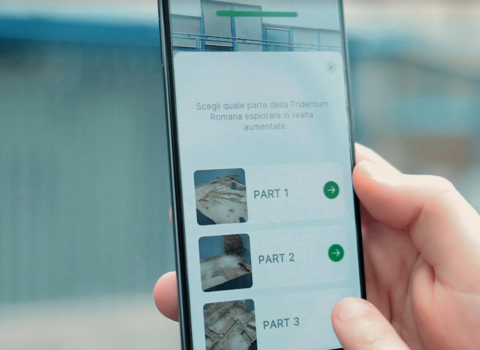#realtà aumentata
-

-
July 2, 2018From books to augmented reality: artificial intelligence for art history teaching 2.0The students of the Maffei High School in Riva del Garda have virtualized sites and objects that are artistically relevant to the town. To do this they used REPLICATE, an app developed by Fondazione Bruno Kessler that allows the creation of 3D models of objects and buildings, thanks to photographs taken with just a smartphone